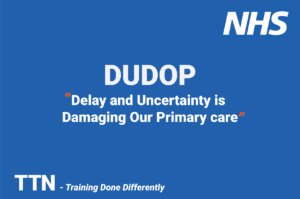Spring, New York…
… Central Park, the Lilac Walk in full-blaze. The Japanese Cherry Blossom, on the verge of handing-on its colours to the summer.
Further along, at the heart of Mid-town Manhattan, at 787 Seventh Avenue you’ll find the sleek glass and granite façade of the Equitable Centre. The hallmark work of the architect, Edward Larrabee Barnes.
In May, 1997 it was the venue for a unique experiment. ‘A machine is cleverer than a man’. To prove the theory wrong the reigning world chess champion took-on IBM’s Deep Blue supercomputer.
The best of six games.
Kasparov won the first game decisively but Deep Blue levelled the match by winning the second game in an unexpected and brilliant fashion.
The next three games ended in draws.
The sixth and final game… Deep Blue defeated Kasparov.
The key moment was in the second game. Kasparov made an uncharacteristic mistake and resigned in a position he later believed to be a draw. This unsettled the champion for the remainder of the match.
The sixth game featured breathtakingly, aggressive play by Deep Blue. Exploiting Kasparov’s mistakes… the machine won.
Chess, in the mind of the public, was the ultimate confirmation that the age of the machine-that-could-think, had arrived.
Since then machine learning and natural language computing have combined to give us what we call artificial intelligence. It’s not really, but it won’t be long.
A recent journey in a London Black Cab was enlightening.
The cabbie was in full curse-mode about the rise of Uber, the ride-hailing app. Their drivers, unlike Black Cab drivers, don’t have to pass a knowledge test, to prove they know their way around London.
They simply use an App called ‘Waze’. It’s free, predicts journey times, avoids traffic jams and will see London’s Black Cab drivers,become extinct.
Who’s going to spend three years, ‘doing the knowledge’ when you can download a free app and earn a living driving a cab in three days?
The rise of machine learning, algorithms, natural language computing increasingly are replacing skilled-tasks and reducing the need for human expertise and experience.
There are lots of reasons for this.
Cost reduction in a global competitive market. Tasks can be outsourced to lower- wage regions. Work is turned into a series of tasks, to be completed by less qualified and less experienced people.
Every part of the retail sector has been up-ended by self service and on-line. Emptying retail premises and making a ghost-town of the high street.
Advanced robotics and assembly-lines have reduced the demand for skilled machinists and engineers.
Even education is moving to teaching on-line. Shifting the role of educators to facilitators.
The upshot is; reduced job-satisfaction, wage stagnation. The high risk of unemployment. The erosion of the roles of the middle-classes.
Buying a house? You think you’ve hired a solicitor? You haven’t. You’ve hired an associate solicitor, supported by an algorithm.
Healthcare? The drivers of cost and workforce are the same for the NHS.
You must see what’s happening.
Physicians associates.
They were introduced into the workforce in 2015. Since then their numbers have grown, unregulated, to about 3,000.
In 2019 the Additional Roles Reimbursement Scheme (unnoticed in the Long-Term Plan) incentivised their recruitment. The GMC will regulate them from next year.
NHSE plans 10,000 by 2036. By the way, since 2019 there are 10,000 nurse associates, of which about 1,500 have gone-on, to become registered nurses.
Familiar themes… taskifying work, flexibility, speed of training, filling workforce gaps. Cheaper.
We didn’t know it but, a machine that just on 30 years ago, was able to bamboozle a chess grand-master, was just the start of a revolution…
… that now, can combine good and willing people with machine-learned decision-support, natural language interrogation and image comparison to revolutionise the future of diagnostics and our care.
Can it? Should it?
How qualified does a health professional have to be if a machine can take a blood test, or an image, diagnose us and create a prescription. Couldn’t we do it for ourselves…
… DIYC… do it yerself care, like banking, holiday-bookings, grocery lists and tailoring. Yes, they’re doing it, too.
There is an alternative.
Instead of investing in machines, we invest in people.
Encourage everyone to perform at the top of their license and qualifications. Invest in education, training, career advancement, personal development.
Where enough people are qualified more than enough, to make sure we get it right first time.
Create an environment where post graduate education is normal and funded. Where insightful human interaction discovers everything a machine never will.
We have some decisions to make.
This is not reform like Streeting’s silly, 90’s league tables.
It’s not modernisation, with Milburn’s futile ‘freedoms for Trusts’.
This is eye-watering, real-deal, root-n-branch system-delivery, redesign.
The question is, do we want it?
News and Comment from Roy Lilley
Contact Roy – please use this e-address roy.lilley@nhsmanagers.net
Reproduced at thetrainingnet.com by kind permission of Roy Lilley.








